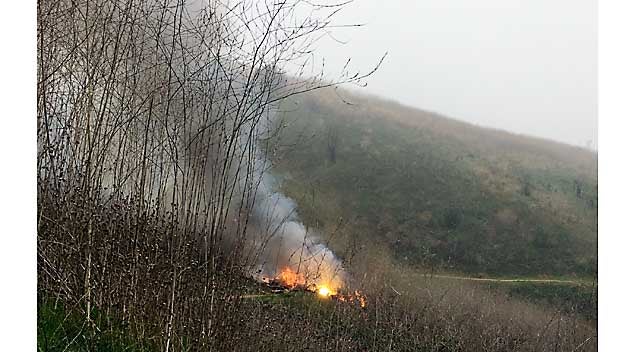Investigators say last minute of Kobe Bryant’s fatal helicopter flight sudden and terrifying descent before crash
Published 11:41 am Wednesday, January 29, 2020
Aviation experts and crash investigators say passengers on Kobe Bryant’s helicopter would have had a terrifying last minute before the fatal crash, based on early data.
Investigators said Tuesday that the pilot in Sunday’s crash, Ara Zobayan, had been climbing out of the clouds when the chartered aircraft banked left and began a sudden and terrifying 1,200-foot (four football fields or the height of New York’s famous Empire State Building) descent.
The deadly dive lasted nearly a minute, investigators said Tuesday. The helicopter slammed into a fog-shrouded hillside, scattering debris more than 500 feet.
“This is a pretty steep descent at high speed,” the NTSB’s Jennifer Homendy said. “We know that this was a high-energy impact crash.”
The last of the victims’ bodies were recovered Tuesday, and coroner’s officials said the remains of Bryant, Zobayan and two other passengers have been identified using fingerprints.
At the time of the crash, Bryant was on his way to a youth basketball basketball tournament in which his daughter Gianna was playing. Two of her teammates also were on the helicopter with parents.
Zobayan, 50, was well-acquainted with the skies over Los Angeles and accustomed to flying Bryant and other celebrities, racking up thousands of hours ferrying passengers through one of the nation’s busiest air spaces. Friends and colleagues described him as skilled and cool-headed.
His decision to proceed in deteriorating visibility, though, led experts and fellow pilots to wonder whether pressure to get his superstar client where he wanted to go played a role in the crash.
Randy Waldman, a Los Angeles helicopter flight instructor who viewed tracking data of the flight’s path and saw a photo of the dense fog in the area at the time, said Zobayan should have turned around or landed but may have felt pressure to reach his destination, an occupational hazard often referred to as “got-to-get-there-itis” or “get-home-itis.”
“Somebody who’s a wealthy celebrity who can afford a helicopter to go places, the reason they take the helicopter is so they can get from A to B quickly with no hassle,” Waldman said. “Anybody that flies for a living there’s sort of an inherent pressure to get the job done because if too many times they go, ‘No, I don’t think I can fly, the weather’s getting bad or it’s too windy,’ … they’re going to lose their job.”
The Associate Press contributed to this article.










